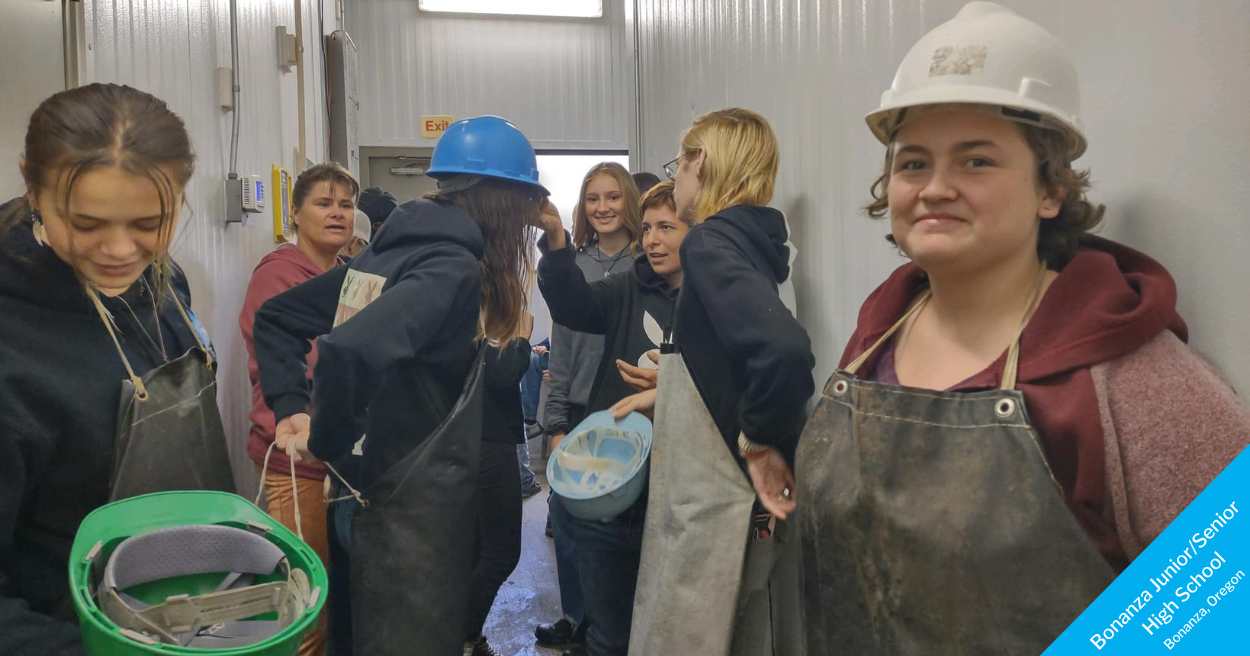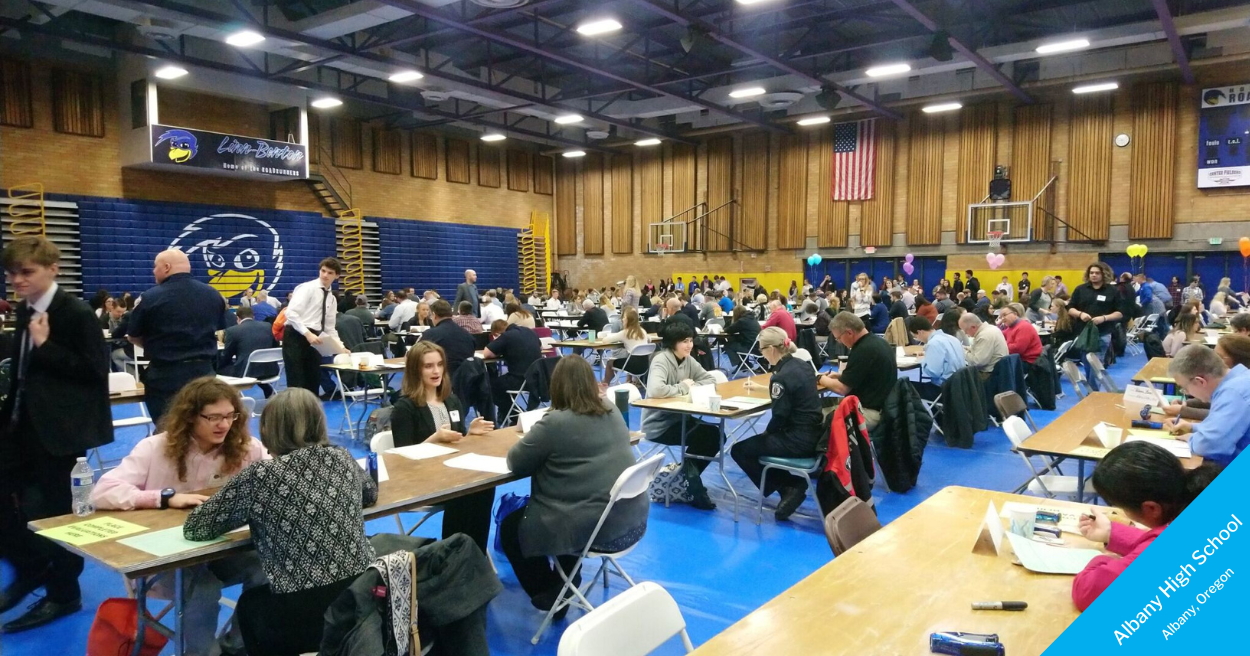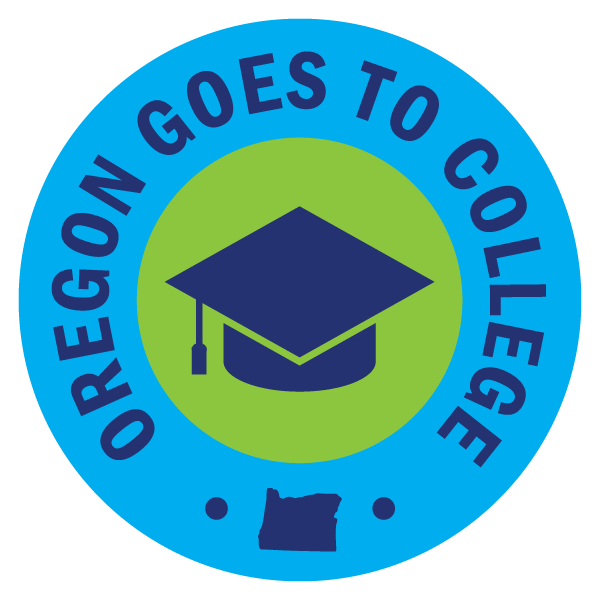
Learn how to guide students in discovering their career interests and goals.
Explore various tools and activities that help students identify their strengths, passions, and aspirations for their future careers.
Table of contents
★ = Oregon Goes To College resource
Why career exploration matters
Career exploration helps students learn about themselves and the world of work. It involves researching careers and planning how to get them. Understanding what type of education and training each career requires is an important part of career exploration. Career exploration begins in childhood and continues throughout your life.
-
66% of high school graduates wish they had more career exploration in high school or middle school.
-
78% of high school students want to have career plans before graduating from high school.
-
80% of high school counselors see their students overwhelmed by career and college decisions.

Early career exploration benefits
Starting in middle school, students begin to explore their personal identity and shape their personal beliefs, figuring out who they are and what they want to do. Students discover what it means to be “college material.” Middle school is the best time to start exploring college and career options.
Exploring options early helps students:
-
Stay engaged and satisfied with school. Students see how their education connects to their career goals.
-
Avoid identity foreclosure. Students explore different careers that match their values. They become less likely to let others decide for them, potentially limiting them from finding more fulfilling careers.
-
Experiment with different identities. Students try different paths for their future without much risk.
-
Plan high school courses. Students understand what classes they need to take to prepare for their education after high school.
-
Boost confidence. Students feel empowered to make decisions about their career and college plans.
"Oregon Goes To College believes career and college exploration goes hand-in-hand. Not only do students need to be exposed to the variety of careers available to them, but they also need to understand the education and training required to get them to those careers." Adrienne Enriquez, Director, Oregon GEAR UP
Career exploration process
Over 60% of all students rely on high school teachers and counselors for advice about what to do after high school. Whether starting from scratch or wanting to improve ongoing career exploration, follow this 3-step process to assist students in building self-efficacy:
- Self-assess
- Explore career options
- Get experience and plan for the future
1. Self-assess
Help students explore their passions and abilities.
Ask them questions like:
- What do I love to learn and do?
- What skills do I want to improve or develop?
- What am I good at and proud of?
- What matters to me?
Self-assessment resources
Help students understand their interests and goals.
Use these following college and career resources to introduce students to different careers and education paths.
Resources for all grades:
- Building a Career Pathway ★: Improve students’ understanding of how different careers require various levels of education. Empower self-reflection on values, interests, and skills to develop a career pathway that is right for them.
- Career Conversation Starters: Guide students with these conversation starters mapped to the American School Counselor Association (ASCA) standards for all grade levels.
- Oregon CIS: Free, online resource for all Oregonians. Use their many career tools and assessments as classroom activities. Students will need to create an account. To access these tools and assessments, follow these steps:
- Login to Oregon CIS.
- Click on the “Explore Resources” tab.
- Click on the “Occupations” box.
- Select the assessment you want your students to complete.
Recommended Oregon CIS activities:
Middle school
- Career Cluster Inventory
- Reality Check - Use our Reality Check Reflection ★ activity to guide discussion.
High school
- Occupation Sort
- Interest Profiler (long or short version)
- Skills
- Reality Check - Use our Reality Check Reflection ★ activity to guide discussion.

2. Explore career options
Show students different ways to find career information.
Teach students to:
- Research careers that are good fits based on self-assessments.
- Gather information about careers and industries online and offline.
- Network with professionals in their field of interest through social media, career fairs or other events.
- Shadow in a field or job they are interested in.
- Interview an expert in that area.
- This article from The Planetary Society teaches tips on asking experts for an interview.
- Explore internship or mentorship programs.
- Internships are a great way to “try on” a profession for a period of time to see if you like it.
- Mentorship programs provide guidance and support while working in a particular career or field.
- Identify training and education needed for future careers. Have students answer questions like:
- What skills and knowledge do you need to acquire your dream job?
- Do you have to go to college to gain the skills and knowledge required for your dream job?
- What kind of college program or major matches your dream job?
- Which colleges offer the programs and/or majors needed to help you achieve your dream job?
In Oregon, we group occupations into six Career Areas. Students can find many future options by exploring an area.
Explore resources
Support students' discovery of different career paths and the necessary skills and education required.
In the classroom:
- Career Charades ★: Act out jobs in the six career learning areas.
- Name That Job ★: Think about a variety of jobs and the education required for them.
- My Future Self ★: Visualize future careers, current skills and what is still needed to learn to land a dream job.
- 101 Careers ★: Use in a variety of games and activities (including Twenty Questions, Charades, Wheel of Fortune, Pictionary, crossword puzzles, etc.) to introduce and reinforce information about careers.
- GO STEM: Share videos introducing students to STEM careers in Eastern Oregon.
- Career Journeys Toolkit: Use the English and Spanish classroom lessons to guide students as they learn, explore, prepare, and train for their future careers.
- Career Journeys Videos: Teach students about a variety of jobs in Oregon and the education and skills needed to be successful.
- Help students explore apprenticeships at Oregon Apprenticeship.
- The Music Workshop offers free programming around careers in music tailored specifically for middle school students. All lessons align with the national music education and humanities standards.
- The Occupational Outlook Handbook provides information on different jobs, including what workers do, the work environment, education and training requirements, qualifications, pay, and job outlook.
School-wide:
- Use the Career Pathways Poster ★ to highlight graduates from your school in an Alumni Careers Gallery ★ activity.
- ABCs of Careers ★: Introduce students to the language of careers.
Events:
- Use Career 20 Questions ★ to introduce career guest speakers.
- Host a Career Day! See the Career and College Day Toolkit ★ for ideas.
3. Get experience and plan for the future
Prepare students now to understand what is needed for their future aspirations.
By 2031, 70% of jobs in Oregon will require some form of education or training beyond high school.
Encourage students to:
- Gain work or volunteer experience related to their future career.
- Be involved in activities, events or programs that support their career goals.
- Leadership positions in high school clubs are great opportunities.
- Complete the necessary steps to get further education or training. This includes applying for
Planning resources
Help students prepare to get the education and training needed for their career goals.
Guide students to pick classes related to their future career goals in high school. Dual enrollment allows students to explore career options while earning college credit.
Students interested in apprenticeships should explore pre-apprenticeship programs and current openings for after graduation.
The most useful career exploration includes learning about the education required. Below are grade level appropriate resources for exploring and picking a college. Find more ideas in the College Fit Toolkit ★. This resource helps students explore college fit at each stage of the college search process.
Middle school:
- College Conversations ★
- College Door Wars ★
- Online College Scavenger Hunt ★
- Why Go To College Presentation ★
High school:
- 6 Ways to Pay for College Presentation ★
- 6 Ways to Pay for College handouts ★ (English / Spanish)
- College Fit Game ★
- Financial Aid Offer Challenge ★
- Make Your College List ★
- Singled Out: Oregon Colleges ★
- Types of Colleges ★
- What is College Fit Presentation ★
- Why Go To College Presentation ★
- Use our Google Doc worksheets to help students keep their college information organized:
